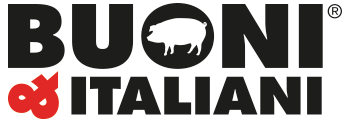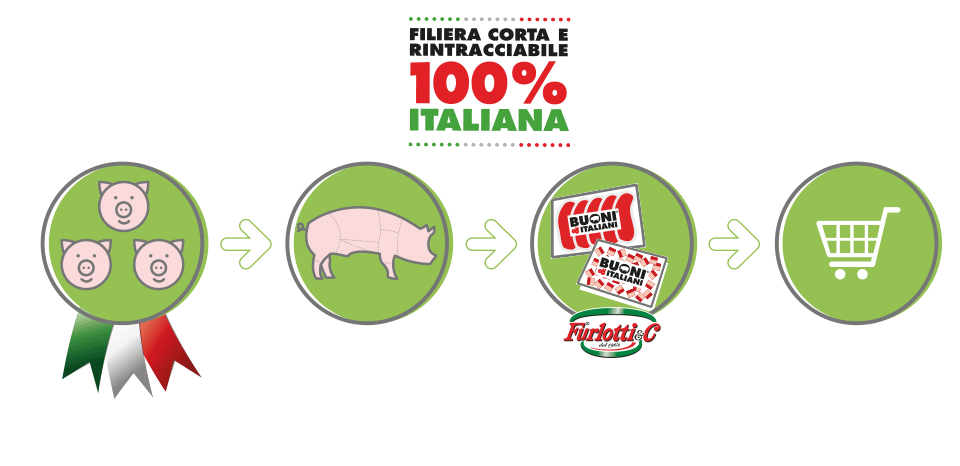Linea Buoni & Italiani
Linea Buoni & Italiani

The meat comes from pigs born and bred in Italy, fed with feed mill.
Quality, Tradition, Expertise combined with Innovation turn the raw meat into exclusive flavors, perfumes and tastes.
Farms, slaughterhouses and manufacturing plant are located within a limited area.
As a protection for customers, the feed provided to the farms don’t contains GMOs
The spinnerets products ensure a direct relationship between farms, slaughterhouses and our production site and follow Excellence, Quality and full Traceability.

The products belonging to Buoni & Italiani are inspired by these principles:
- environmental sustainability: balance ecosystem, pig welfare, commitment to provide product obtained throughout sustainable production methods in each step of the spinneret.
- health and food safety: healthy and natural products respecting the consumers health. Just nitrites, nitrates and sodium ascorbate are allowed as preservatives.
- social accountability: social cohesion, respect for people and workers’ social rights .
- transparency: the access to information is the first step to conscious choices and responsible lifestyle.
- territoriality: raw meat comes from farms far from our plant not over 60 kilometers.
- taste: Quality, Tradition, Expertise combined with Innovation turn the raw meat into exclusive flavors, perfumes and tastes.
The pigs
The cuts of meat used for “Buoni & Italiani” range come from ” Italian heavy pig”, unique all around the world and normally used in Italian PDO production: this pig is reared only in Italy and it is bred with a “special” feeding which ensure meats different from the foreign ones in terms of fat/lean rate and weight loss during the seasoning: the result is a finished product with better organoleptic features, well distinguishable in quality.
Genetical selection
The pigs have father “Duroc” and mother “Italian Large White x Landrace”: pigs obtained from this selection, in addition to distinctive qualitative features, they are less susceptible to stress, less nervous, less aggressive and fearful, generally stronger against diseases. All these aspects ensure either the pig health during the breed and the meat quality during each manufacturing step.
Breeding
The insemination is artificial: this ensures purity and constancy of the races used for the reproduction. The sows, after the insemination, are hosed in group in indoor stables with an access to an external area. Just close to the birth date, the sows are transferred in individual lodgings until the weaning of little pigs (about 21 days from the birth).
Expected breeding steps: weaning (until 30 kilograms), growing (from 30 to 80 kilograms) and fattening (until the reach of 150-180 kilograms) in about 240 days.
In each step of growing, it is established a special diet: just corn, bran, stillage, various cereals, whey and buttermilk, it is not allowed the use of fish meal and aliments derived from GMOs.
The pigs, all their life cycle long, have indoor and heated spaces, external areas wide enough to ensure their movement and to avoid the competition with each other; in each steps are adopted all the best practices and techniques ensuring the intrinsic meats’ development and respect of the animals’ health, preventing stress situations (tail and teeth cutting are prohibited, natural castration is allowed until the 7th day of life).
Traceability:
Until the 30th day of life, the breeders stamp, upon both the thighs of each little pigs, a tattoo that represents their own identification code and the birth month of the pig: such codification will follow the pig in every step of his growing and it will be reported in every registration and transfer.
Pigs are sent to the slaughterhouse, gathered in homogeneous groups, on air-conditioned truck with availability of water, enough space to move and prevent aggression phenomena.
